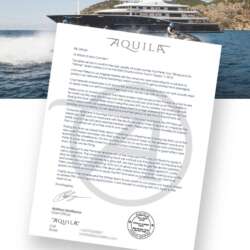As passionate advocates of automotive care and paint protection, we understand that paint protection films play a crucial role in preserving and enhancing the beauty of our vehicles. However, as with all things, there may come a time when your paint protection film needs to be removed – whether due to wear, damage, or simply a desire for change. In this article, we focus solely on the art of paint protection film removal, demystifying the process and providing helpful tips to ensure your vehicle’s paint remains in pristine condition throughout the procedure.
Join us as we explore the reasons for paint protection film removal, the professional techniques involved, and expert advice on preserving your vehicle’s paint during this essential process. With our expert insights and advice, you can seamlessly remove your old paint protection film and replace it with a new, high-quality solution, keeping your vehicle’s surface looking immaculate for years to come.
When and Why to Remove Paint Protection Film
There are several reasons why you may choose to remove your vehicle’s PPF:
- Age: Over time, PPF can lose its self-healing properties and become less effective at protecting your vehicle’s paint. Typically, high-quality paint protection films last between 5-10 years, after which they may need to be replaced.
- Damage: Accidents, scratches, or improper installation can damage your PPF, prompting the need for removal and replacement.
- Aesthetics: If you plan on repainting or applying a new wrap to your vehicle, you may need to remove the existing PPF to ensure proper adhesion of the new finish.
Professional Paint Protection Film Removal Techniques
Removing paint protection film requires precision and care to avoid damaging your vehicle’s paint. Here are the essential steps involved in the professional PPF removal process:
- Heat Application: To start, professionals use a heat gun or steamer to warm the surface of the PPF, making the film more pliable and easier to peel off. Proper heat application is crucial, as excessive heat can damage the underlying paint.
- Peeling: Once the PPF has been sufficiently heated, professionals carefully peel the film away from the vehicle’s surface, working in small sections to avoid damage. It’s important to peel slowly and steadily, maintaining even pressure throughout the process.
- Adhesive Removal: After the PPF has been removed, there may be residual adhesive left on the vehicle’s surface. Professionals use specialized adhesive removers and gentle, non-abrasive cloths to clean the area without causing harm to the paint.
- Surface Preparation: Once the adhesive is fully removed, professionals thoroughly clean and prep the car’s surface, correcting any paint imperfections in preparation for a new PPF or other finish.
Tips for DIY Paint Protection Film Removal
If you decide to tackle PPF removal as a DIY project, follow these expert tips to ensure success:
- Assemble the Proper Tools: Gather a heat gun or steamer, a plastic scraper or squeegee, and an adhesive remover to make the removal process more efficient.
- Work in a Controlled Environment: Choose a well-lit, temperature-controlled space to work in, as extreme temperatures and poor lighting can lead to mistakes and potential damage.
- Patience Is Key: Take your time during the removal process, applying even pressure while peeling and working in small sections to minimize the risk of tearing or breaking the film. Remember, haste can lead to unintended paint damage.
- Seek Help When Needed: If you encounter any issues or concerns during the PPF removal process, don’t hesitate to consult a professional for guidance.
Protecting Your Vehicle’s Paint After PPF Removal
Follow these tips to ensure your car’s surface remains in pristine condition after PPF removal:
- Evaluate Your Options: Explore our online shop for new paint protection film options to replace your old PPF and continue safeguarding your vehicle’s paint.
- Routine Maintenance: Maintain your vehicle’s surface through regular washing, waxing, and polishing to keep your paint looking its best and protected from environmental damage.
- Store Your Vehicle Properly: When not in use, try to store your vehicle in a covered or shaded area to minimize exposure to UV rays, which can cause fading and oxidation.
- Annual Inspection: Schedule annual inspections of your vehicle’s paint, clear coat, and any protective films to ensure they remain in optimal condition and address any issues promptly.
Conclusion
Removing an old or damaged paint protection film can be a delicate process requiring precision, expertise, and patience. By understanding the reasons for removal, the professional techniques involved, and the essential tips for DIY removal and preserving your vehicle’s paint, you can ensure a smooth and successful PPF removal experience. Whether you plan on replacing your PPF or opting for a different finishing solution, don’t forget to browse our webiste for a wide range of high-quality car wrap in Los Angeles designed to keep your vehicle’s surface looking impeccable for years to come. Let 2wrap.com help you maintain your prized possession’s stunning appearance while continuing to provide the best protection possible.
 Reference Letter Aquila Yacht
Reference Letter Aquila Yacht carwrap simulator
carwrap simulator 3D CARWRAP CONFIGURATOR
3D CARWRAP CONFIGURATOR
